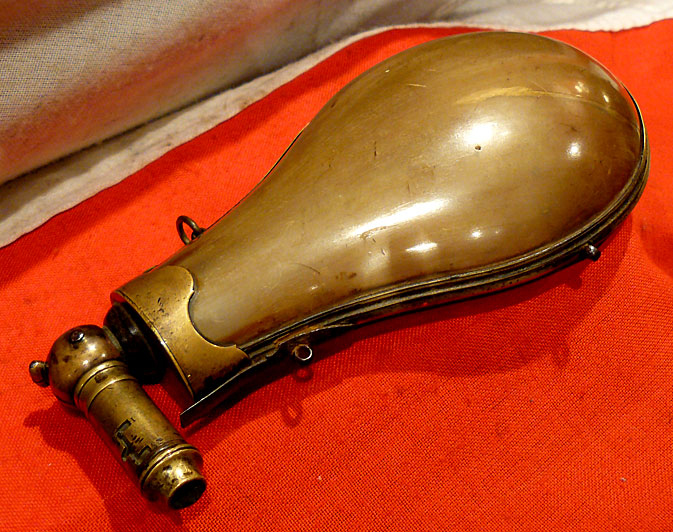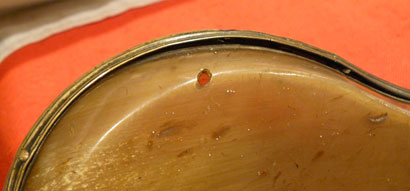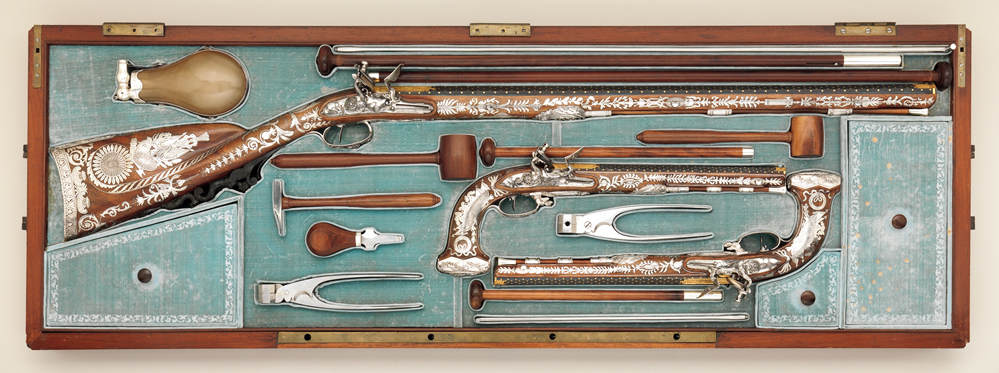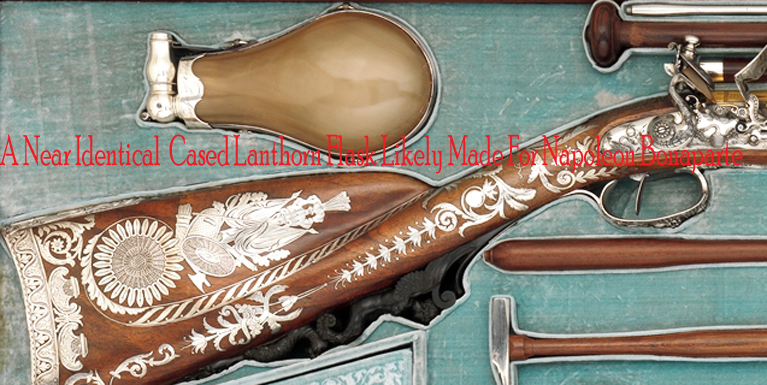French Very Fine & Most Rare 18th Century Lanthorn Powder-Flask Attributed To Nicolas Noel Boutet
A rare 18th century French flask with a most unusual fold-down nozzle system. With a large, rounded lanthorn body, flattened on the back, with shaped top mount and folding swelling nozzle, reeded brass medial mount, and rings for suspension. For an almost identical example, mounted in silver, see Herbert G. Houze, The Sumptuous Flaske, 1989, pp. 116-117 (illustrated). We also show in the gallery a cased set of the worlds finest flintlock pistols and fowling piece complete with tools and an identical lanthorn flask made by Nicolas Noel Boutet, possibly for Napoleon. This fabulous set is in the Met in New York. We acquired a most similar set, also by Nicolas Noel Boutet, around 50 years ago, that cased set came from a castle in Czechoslovakia, and was commissioned from Boutet for a Prince, that set also had an identical lanthorn flask. Today Iit would likely be approaching a value of a million dollars. Nicolas Noel Boutet was one of the world's greatest gunsmiths, if not The worlds greatest gunsmith, and he made guns for most of the crowned heads of Europe, including Napoleon Bonaparte. He was based at the Imperial Armoury at Versailles. Lanthorn is a transluscent form of ox horn used in the earliest days to make window panes or lanterns. It was the earliest known material for the ingress of light into a room from daylight. In fact the word lantern is a derivative form of lanthorn itself. With lanthorn panes a lantern could be created with a candle to create a portable light and protect the flame from wind. Here are some early instructions as to how it was made; Take the lightest, translucent, hollow portion of an ox or steer horn (these being the thinnest)
Soak this in water for a month
Saw it, split it and press it into plates
Take a short, edge bladed round nosed knive called a "lift" and use it to delaminate the layers (Purportedly up to 12 layers can be gotten from a thick horn).
The Horn may be clarified by coating both sides with tallow, and pressing it between hot irons, thinning it further.
The finished leaves are scraped with steel scrapers, buffed on a polishing wheel, then slightly moistened with vinager and a buffing compound, finally being polished by a buffing compound applied by the palm of the hand (historically the horns were buffed with charcoal and water applied with part of an old beaver hat - the final polish being given by wood ashes applied with the hand). Boutet made several forms of lanthorn flask as its translucent property enable the owner to determine how much powder the flask contained at a glance if held to the light and its resistance to denting was an advantage over copper. A most similar attributed to Boutet flask sold in Butterfield and Butterfield Auction House in San Francisco in 1994 estimated at 1,500 to 2,500 dollars. Minor early crack to the lanthorn body
Code: 22557
950.00 GBP







